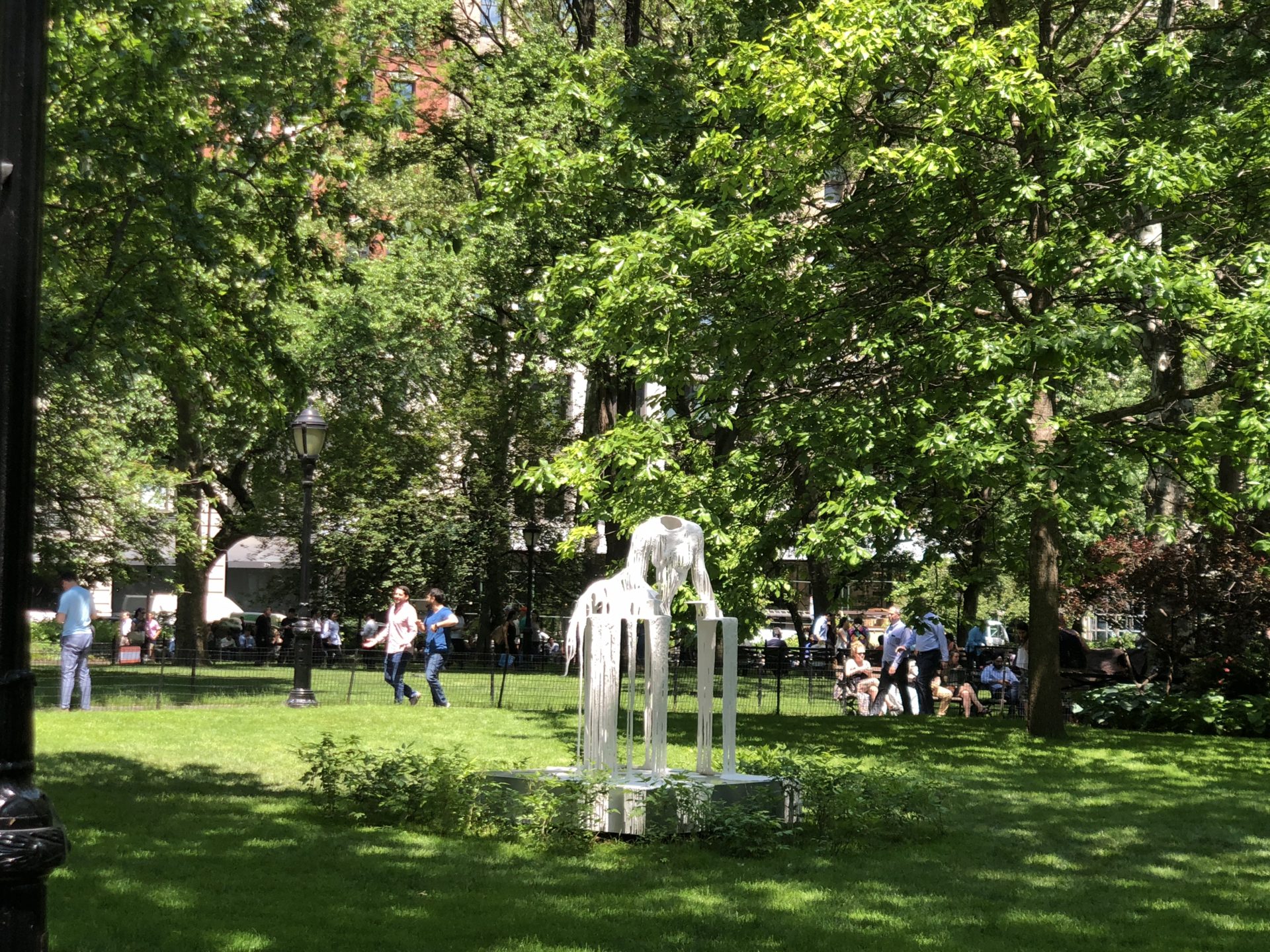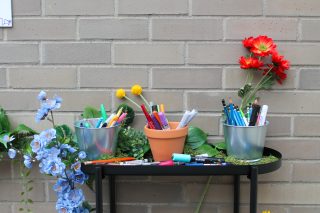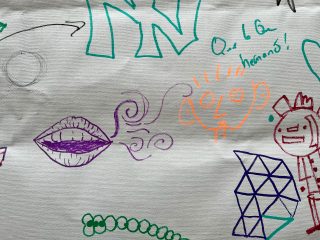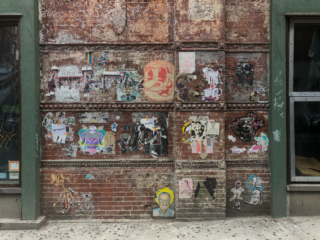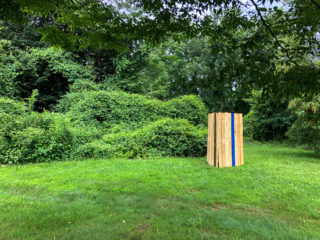When I visited Diana Al-Hadid’s Delirious Matter in Madison Square Park, it was hot, lunchtime, and crowded. Made more crowded by the fact that most of the lawns were off-limits, declared as “resting” and forming protective barriers around four of the six sculptures in the exhibition. I was just glad at least one of the three works I was really here to see—collectively titled Synonym—was accessible enough to actually examine up close.
The paint begins at her collarbone, dripping down and spreading out, becoming more empty with each inch it succumbs to gravity. In the end the white substance drips down the platform she sits on, enough streams to support the work structurally but so few that we’re left only with the intentional suggestion of a female form—evoked through its absence and made all the more untouchable by the resting lawns protecting two of the three Synonym‘s from close view.

At first it was annoying (It’s not public art if the public can’t see it; Why even install these works if I have to be yards away?), but that’s just the dual-sided risk run when both installing and viewing public art. It’s outside in New York… literally anything could happen. And at the end of the day it’s probably a good thing those sculptures were a little more protected from the thousands of people that pour through the city each day, even if it was just by a bunch of little signs warning “DO NOT CLIMB” or “LAWN RESTING.”
The sculptures and installation as a whole seemed a kind of contemporary parable; a reflection of society’s obsession with (and what some wrongfully interpret as a “lack of access” to) the female body in the #MeToo era. Whisper networks have come above ground and the right people are, at least now more often, going down for the right reasons. Al-Hadid’s installation is provocative and protective, a manifestation of how far we’ve come in defending and supporting women, while still an open acknowledgment of the fact that what we really expect of our women (and our art) is beauty.

Because you can’t actually see the woman depicted in Synonym, and with the protected lawns extending that sense of missing, of far-away-ness, Delirious Matter teaches us what #MeToo is after, and in very broad ways, the climate change movement as well: Not everything is ours to take, women’s bodies are not yours, this earth is not ours—nothing is guaranteed and no thing that lives and breathes can ever truly be at the subjugation of another. In many ways art exists for visual consumption, and Al-Hadid gives us this impression of a woman and not the woman herself because women do not exist solely for visual consumption anymore. (Although, the sculpture’s very existence acknowledges that the word solely plays a pivotal role in that last sentence.)
Al-Hadid’s installation is provocative and protective, a manifestation of how far we’ve come in defending and supporting women, while still an open acknowledgment of the fact that what we really expect of our women (and our art) is beauty.

Perhaps it’s because I’m a really big fan of Al-Hadid’s work, or perhaps the dripping aesthetic is just too perfect for a summer installation (melting ice cream anyone?), but art is constantly speaking to what’s going on at large in the world and few people stop to notice. Did you know that atop the piece in the fountain—Citadel—is the bust of a woman looking down on us? Inspired by a 1475 painting by Hans Memling titled Allegory of Chastity, the sculpture mimics the form of the female figure in the painting, who towers above two protecting lions, her body transforming into a mountain at her waist. “I thought of the piece a little bit like a body and a little bit like a landscape,” Al-Hadid told Cultured Magazine of Citadel, “and a little like a woman in a big complex dress with a complex structural harness; but also, a volcano that’s sort of erupting.”

We’re all erupting now, put over the top by the election of a Pussy Grabber-in-Chief and backwards lawmaking our taxes support. It seems ridiculous to have to say this in 2018, but women are people, we’re more than symbols and allegories and centerfolds. And yes, even porn stars, even nude sculptures in parks can say “DO NOT CLIMB,” and their bodies and wishes should be valued and respected.






